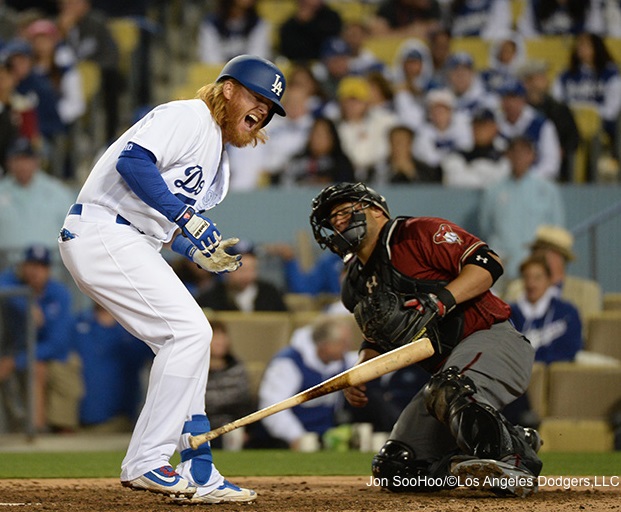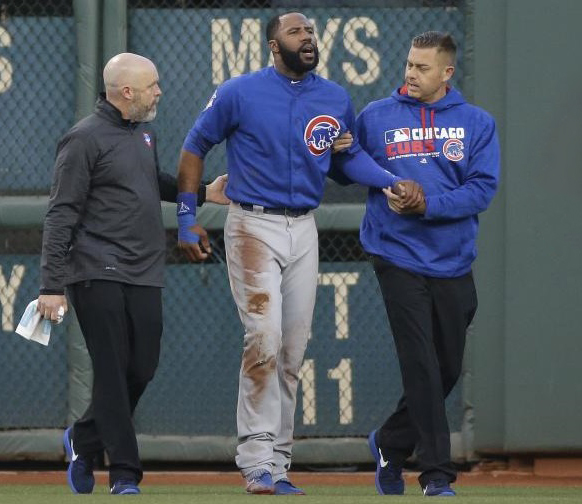Tucked away in the latest MLB Collective Bargaining Agreement is an item that may have escaped our notice. This is not to suggest that I have actually read the agreement, which was signed on December 1, 2016 and will expire on December 1, 2021. That item – of considerable significance – is a change from the 15-day DL to a new and improved 10-day DL and was recently brought to my attention by another ThinkBlueLA staff member.
For whatever reason, the 10-day DL had previously been used at various points in MLB history and was last discontinued in 1984. It was then replaced by the dreaded 15-day DL, which has served faithfully for the last 32 years.
MLB now has a threefold “disabled list” system:
- 7-day DL for players with concussion symptoms as part of the concussion protocol
- 10-day DL with players remaining on the list for a minimum of 10 days
- 60-day DL for players with longer term injury recovery
Of note, time on the 10-day DL can be reduced by placing a player on the list retroactively. For instance, if a pitcher is diagnosed with elbow inflammation on June 4 after feeling soreness during his June 1 start, he could be placed on the 10-day DL on June 4, retroactive to June 2. In that case, he would be eligible to return from the disabled list on June 12 after having served eight days on the 10-day DL.

Under the old system, teams were reluctant to place guys on the 15-day DL because their injuries did not warrant it. As a result, the players were listed as “day-to-day” while their teams were forced to run with short rosters for several days. Hopefully the new 10-day DL will reduce this to some degree.
(Photo credit – Jon SooHoo)
By reducing the minimum time players serve on the DL by 33 percent, the new plan has some significant implications for 25-man roster management. Personally, I think the 10-day DL is a perfect fit for the Dodgers front office which sees the upper minor league team as an extension of the big league roster.
Players:
From the player’s point of view, they may well be more willing to disclose a minor or nagging injury because of the reduced time required to be on the disabled list. Five days is significant in the life of a baseball season. While there may be a risk that a player feels some pressure to return from an injury after just 10 days, perhaps too soon, the same pressure to quickly return was a similar temptation with a 15-day window. Players, of course, may stay on the DL for longer than 10 days if a few more days of recovery time is needed. In any event, it must be part of the medical staff’s mandate to determine if a player is ready to return to action.
A significant benefit of the 10-day DL may be for minor league players, with more players getting big league service time, as it will be easier to shuffle players in and out without having to sit the regulars for 15 days. Maybe a player like O’Koyea Dickson gets a big league stint in the 10-day scenario.
Managing Rosters:
There can be no question that general managers, in concert with medical and coaching staffs, have been hesitant to place players on the 15-day DL. How many times, even in the past year, have we heard a player is day-by-day and then finally see him placed on the disabled list? Somehow, we knew it would happen but the team waited and waited before taking the DL route. When a player suffered an injury, perhaps a small pull or strain, the team had two options. They could keep the player on the bench as a pinch-hitter or DH, but not have him available for regular play, or lose him for 15 days which seemed to be more days than necessary to treat the injury. The 10-day time frame may well be more easily accepted in making such decisions and ease the pain for both the player and the team.
From the outside, it seemed like an easy decision to place a player on the 15-day DL. It was not so easy for the Chicago Cubs in 2016 as they twice played with a 24-man roster for a few games. Outfielder Jason Heyward was the player in question on both occasions. The Cubs chose to play one man short instead of placing Heyward on the 15-day DL as his was considered to be a minor injury. Perhaps if the DL had been just 10 days at that time, maybe he gets a little extra rest.

Both Jason Heyward and the Cubs might have benefited from a 10-day DL rather than a 15-day DL – although they did go on to win the World Series anyway.
(Photo credit – Eric Risberg)
As mentioned, the Dodgers front office will make full use of the 10-day DL. There is little question that they will manage to come up with new and creative ways to, shall we say, exploit the new format for the disabled list. Perhaps it will help eliminate the “phantom” injuries that seemed to happen as a result of the much longer DL.
Certainly, part of the Dodgers mantra is flexibility in developing and acquiring players that can be used in a flexible manner by playing multiple positions. They are also very flexible in the way in which they move players between the various levels within the Dodgers organization. Having quality upper minors depth may now be even more valuable simply because it will be easier to shuffle those guys in and out without having to park a Corey Seager on the DL for 15 days.
What Might Happen:
Who knows what will happen with the 10-day DL replacing the 15-day DL. An educated guess would be that it will speed up the decision-making process regarding injuries – DL or no DL – and will help teams get players back more quickly.
One also might expect that the number of hitters going on the more limited disabled list might increase. The Jason Heyward situation in 2016 would be a classic example, or the Dodgers situation back in 2014 when they were hesitant to place third baseman Juan Uribe on the DL, even though he had a hamstring injury and was unable to contribute at all for three games or so before being placed on the list.
With pitchers, there may be some creativity, especially with relief pitchers. Well, maybe the “phantom” injuries might not stop but a judicious use of actual DL days may well mean there will be an even greater tendency to push the envelope and keep the flow of relief pitchers very fluid. I’m talking about the Dodgers here, pushing until teams complain to the Commissioner’s Office about unintended circumstances.




 February 15th, 2017 at 6:00 am
February 15th, 2017 at 6:00 am  by Harold Uhlman
by Harold Uhlman  Posted in
Posted in 

I am absolutely amazed that it took this long to do this. It will make a huge difference.
I had always wondered why the minor leagues had a 7-day DL and MLB had a 15-day DL.
Not sure why the 10-day DL got abandoned back in 1984 but the thinking must have been sound at the time. Perhaps medical advances since then have help reduce the recuperative time for players.
10 day DL coupled with the minimum 10 day waiting period for players optioned to the minors gives the Dodgers FO a great deal of flexibility in shuttling players back and forth to OKC or Tulsa.
This is a clear advantage for LAD with a FO that utilizes and manages the entire 40-man roster better than any other organization, IMO. I can see Kenta Maeda going on the 10-Day DL 2-3 times during the year, trying to minimize his IP through the summer. And as you surmised, this rule fits the Dodger bullpen perfectly.
I too would like to see O’Koyea Dickson make his MLB debut with the Dodgers this summer, but he is still going to have to make it on the 40 man at some point. I think that becomes less of a problem during the year as more pitchers could pitch themselves off the 40-man. Already on the 40-man, does Chase De Jong get a chance to pitch in LA this year? This could be a factor for Brandon Morrow (who could be first reliever called) Joe Broussaard, Ralston Cash, and Madison Younginer. The FO has set the team up to take advantage of the LA-OKC shuttle very well.